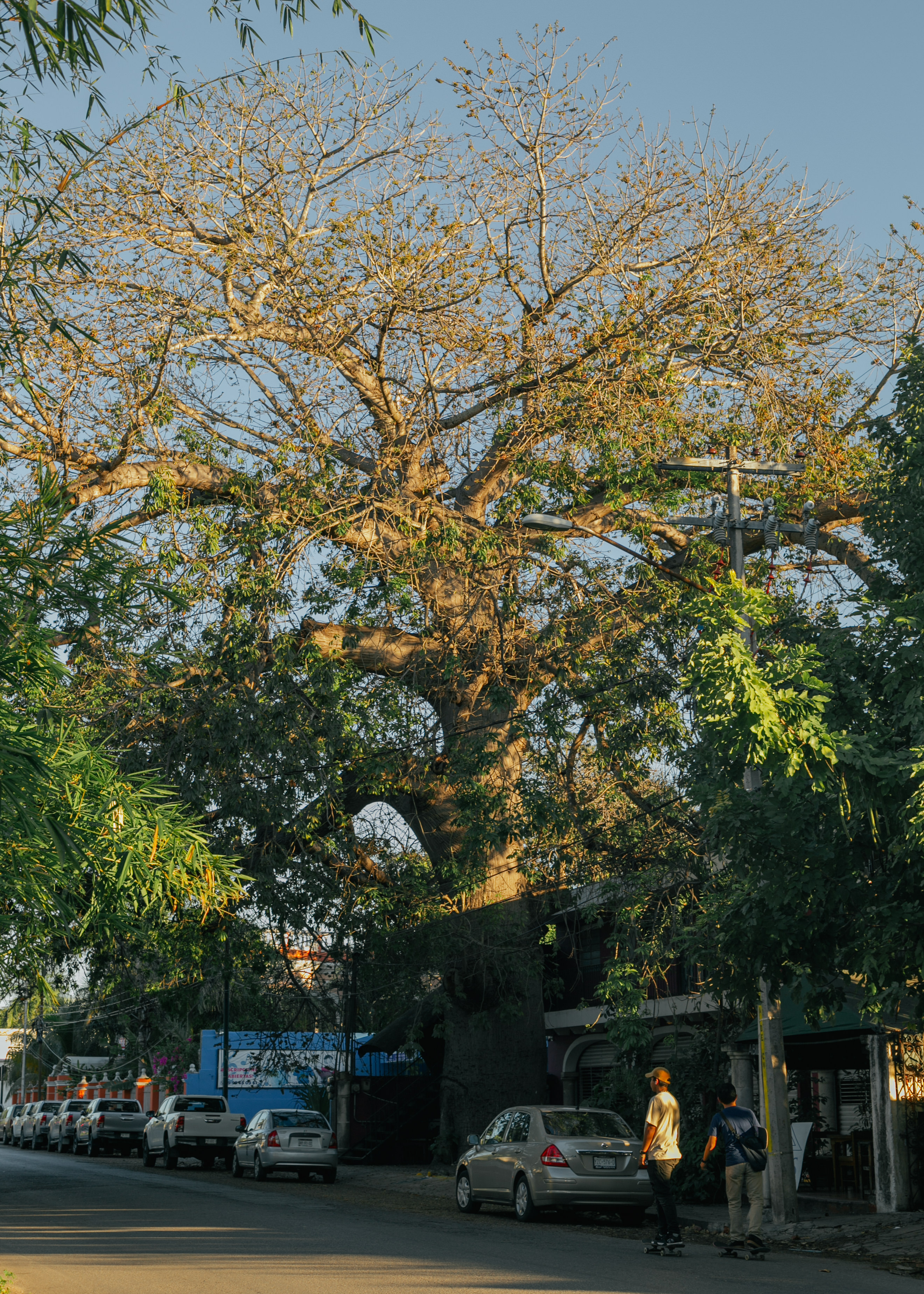Into the Oso Junglas
︎︎︎ 05
Underneath the Shade of The Ceiba Tree
While Chicago hibernates, the ceiba tree is blooming in Mérida, Mexico. Its flowers – with long green stems, soft white and pink petals, and bright pink and gold stamens – are pushing their way out toward the warm sun of the Yucatán’s dry season. The full-grown ceiba tree towers above the city’s streets, growing as large as 100 feet tall and 35 feet wide, with wrinkled gray bark resembling the thick skin of an elephant. After the flowers bloom, the fruit follows: oval-shaped, bright green pods, famous for spilling their cotton-like fuzz onto the city’s spring streets.
︎︎︎
Known as the “tree of life,” the ceiba is sacred to the Maya people. They saw reflected in its massive structure the spiritual realms of the universe: its sprawling branches as the 13 levels of heaven, its trunk as the middle world where humans reside, and its deep roots reaching down into the underworld. The majestic tree was revered in many Maya communities as a symbol of life, strength, and prosperity. Often planted in the center plaza of villages, it was a ritual space and the heart of celebrations and sacred ceremonies.
In addition to its spiritual significance, the ceiba also met many physical needs of early Maya civilizations. The tree’s soft, pliable wood was used to build canoes, and the silk, cotton-like fiber of its fruit was used to weave clothing or stuff beds. The ceiba was even known to have significant medicinal qualities, with portions of its bark, stems, and leaves used to treat localized pain and inflammation. According to the ancient Mayans, men find rest from the hardships of life underneath the shade of the ceiba tree, sheltered by its wide-reaching branches.
By sheer size, the ceiba is a massive force that does not bend easily to the whims of human development. They’re often found woven into the architecture of a built environment, with giant roots covering centuries-old masonry and new structures designed to accommodate the tree's massive limbs. Sometimes hundreds of years old, the ceiba’s age and grandeur outlast the rise and fall of men, religions, and waves of culture.
Past civilizations have incorporated and honored these trees in the places they lived and gathered for centuries. Like the Mayans, we're inspired by the natural environment, taking notes on the way past cultures honored and respected their landscape as we weave it into the heart of each design.



